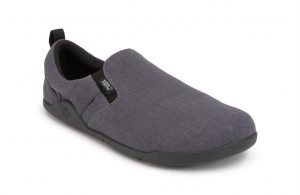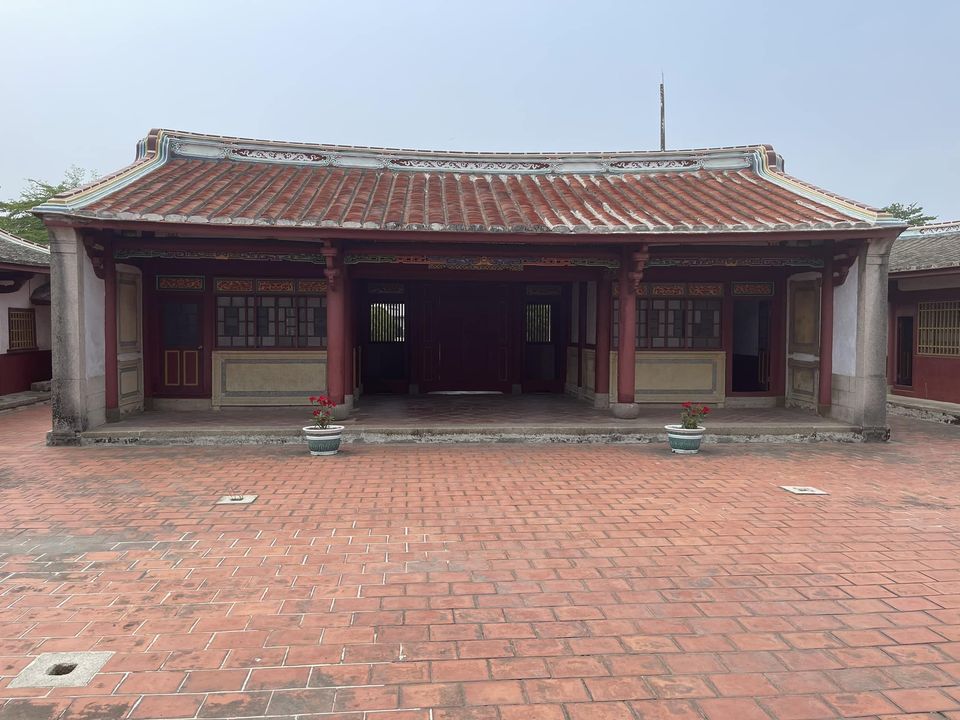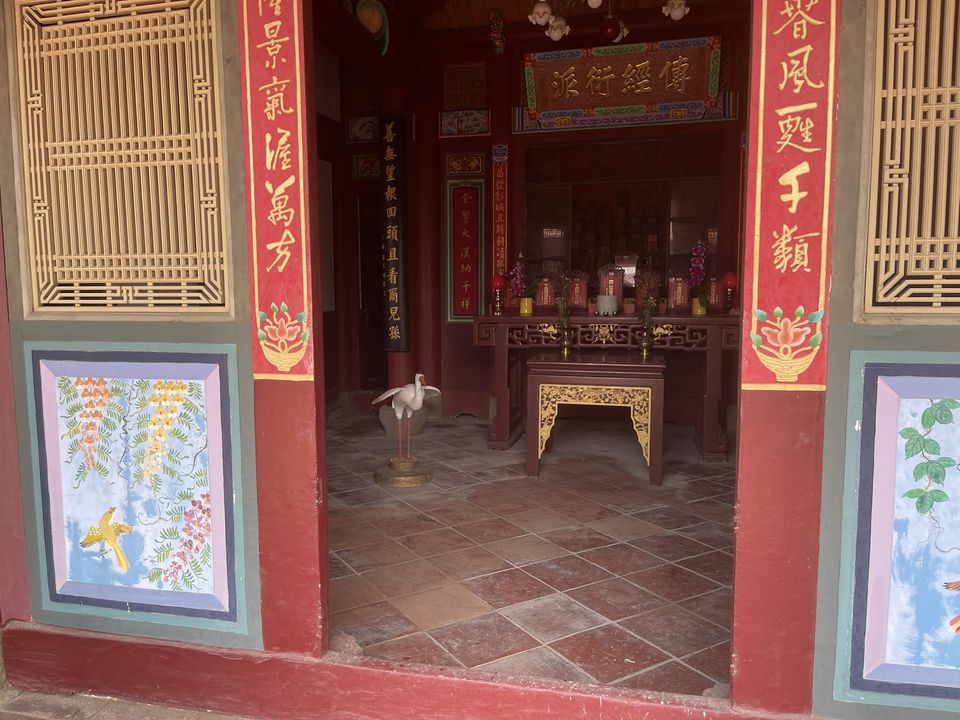吴式裴祖荫传承太极拳盘导臂与
推手的那点事
前 言
搭手、打手、揉手、盘手、推手、这些词用来形容吴式太极拳裴祖荫传承的太极格斗技基础训练的名称是不完整的,在以太极理念为宗旨的搏杀技的综合基础训练里面也没有以上这些词汇。搭手、打手、揉手、盘手、推手、这些词汇从字面上看都是针对手去的,手是手臂的末端,是手臂的梢节,也是身体的梢节。我们吴式太极拳裴祖荫传承的基础训练和以太极理念为宗旨的搏杀技相似的基础训练里都不是冲着手去的,从这个意义上讲,我们吴式裴系太极拳在基础训练上的手段,与之要达到的目的,就不能用搭手、打手、揉手、盘手、推手、这些简单的词汇来诠释其意思,特别是与现在社会上所呈现广泛的“推手”模式是风马牛不相及,因此我觉得我们吴式太极拳裴祖荫传承的综合格斗里基础训练的名称应为:“盘导臂”更为贴切。“盘导臂”这三个字顾名思义,不解释了。(下面为与“推手”一词的区别我们吴式太极拳裴祖荫传承就用“盘导臂”一词)
A Few Things About the Arm-Training and Pushing Hands of Wu-Style Tai Chi Chuan Inherited by Pei Zuyin
Preface
The terms “hand-holding,” “slapping hands,” “rubbing hands,” “pan-handing,” and “pushing hands” are incomplete when used to describe the basic training of Tai Chi combat techniques in Wu-Style Tai Chi Chuan Inherited by Pei Zuyin. These terms do not exist in the comprehensive basic training of combat techniques based on Tai Chi principles. Literally, these terms, “hand-holding,” “slapping hands,” “rubbing hands,” “pan-handing,” and “pushing hands,” all refer to the hand. The hand is the end of the arm, the distal segment of the arm, and also the distal segment of the body. Neither the basic training of our Wu-style Tai Chi, inherited from Pei Zuyin, nor the basic training of similar combat techniques based on Tai Chi principles, focuses on the hands. In this sense, the methods and objectives of our Wu-style Pei-style Tai Chi basic training cannot be simply defined by terms like “hand-tapping,” “hand-striking,” “rubbing hands,” “coiling hands,” or “pushing hands.” This is especially true when compared to the widespread “pushing hands” model currently in use. Therefore, I believe the basic training of our Wu-style Tai Chi, inherited from Pei Zuyin, in mixed martial arts should be more appropriately called “pandaobi.” The three words “pandaobi” are self-explanatory and require no further explanation. (The following explains the difference between this and the term “Push Hands.” Our Wu-style Tai Chi Chuan, in the Pei Zuyin lineage, uses the term “Pan Dao Bi.”)
一、盘导臂为什么非常重要
太极盘导臂是以太极理念为宗旨,训练综合实战能力的基础科目,是整个搏杀技训练体系闭环中的一个片段,假设这个闭环是从零到一百,那么盘导臂就是这个闭环中零到一的片段,因此这个片段是不可缺失的。这个片段的训练质量和成效决定了是否可以进入下一个训练片段,能否与下一个片段顺畅衔接,并且能够在下一个片段的训练中将上一个片段的东西充分地展示出来。因此后面片段的训练质量与前面片段的训练质量有着必然的因果关系。
从古至今我们的武术先辈们总结积累了一系列非常宝贵而系统的科学训练方法,这些宝贵的训练方法在有缘弟子中代代相传,延续至今。我们吴式裴系在盘导臂训练上有自己的独到之处,下面做个简要介绍。
I. Why is Pan Dao Bi so important?
Tai Chi Pan Dao Bi, based on Tai Chi principles, is a fundamental discipline that develops comprehensive combat skills. It is a segment of the entire closed loop of combat training. Imagine this closed loop as going from zero to one hundred, and Pan Dao Bi is the segment from zero to one. Therefore, this segment is indispensable. The quality and effectiveness of this segment determine whether one can move on to the next training segment, whether it can flow smoothly into the next, and whether the training of the previous segment can fully demonstrate the knowledge gained in the next training segment. Therefore, the quality of training in the subsequent segment is inevitably causally related to the quality of the previous segment. From ancient times to the present, our martial arts predecessors have accumulated a series of invaluable and systematic scientific training methods. These valuable training methods have been passed down from generation to generation among disciples, and continue to this day. Our Wu-style Pei lineage has its own unique approach to Pan Dao Bi training, which we will briefly introduce below.
二、盘导臂训练时的礼让
在盘导臂训练时不管是单手操还是双手操练,彼我双方上步搭手时都要做到如套路中的琵琶手,1、自己的拇指尖对准自己的鼻子尖,2、拇指尖与自己的鼻子尖在一个水平线,3、也在自己身体的中心线上,4、拇指与自己鼻尖距离是自己的一拳加一开掌间。双方右手搭手时手掌小鱼际下端掌根外侧为接触点,这个接触点应在二人的中心线上,双方以中心线为界 ,如这个接触点偏我的左侧,則是对方抢先占我便宜,反之是我占对方便宜。双方搭手后如我主动往自己右耳方向牵引,对方即棚加挤,我接着按,对方接着捋,我再接着棚和挤,这就形成了“棚挤捋按”(一个人的动作循环),为“四正”盘导臂,再如双方搭手后我主动往自己的左耳方向牵引,牵引同时我后坐加棚,对方即挤与按,我再接着捋,这样我就形成了“棚捋挤按”,此为“四负”盘导臂。
搭手时不抢过中线,是“礼貌”,主动牵引让对方先进攻表示“谦让”,这些就是我们裴传吴式太极拳盘导臂训练时的教养。
II. Courtesy During Arm-Training
During arm-training, whether practicing with one or both hands, both players should follow the same principles as in the Pipa Hands technique in the routine when stepping up and joining hands.
1. The tip of your thumb should be aligned with the tip of your nose.
2. The tip of your thumb and the tip of your nose should be aligned horizontally.
3. They should also be aligned on the centerline of your body.
4. The distance between your thumb and the tip of your nose should be equal to one fist plus one open palm. When both players join hands with their right hands, the point of contact should be the outer side of the base of the palm at the lower end of the hypothenar eminence. This point of contact should be on the centerline between the two players, with the centerline as the boundary. If this point of contact is to my left, then my opponent has taken advantage of me; otherwise, I have taken advantage of my opponent. After both parties have joined hands, if I actively pull toward my right ear, the opponent will then press and push. I then press, and the opponent will then follow up with a pull. I then continue with the press and push. This forms the “Pang, Ji, Lu, An” (a single-person movement cycle), which is called the “Four Positive” arm-training method. Another example is that after both parties have joined hands, if I actively pull toward my left ear, while simultaneously leaning back and adding a press, the opponent will press and press, and I then follow up with a pull. This forms the “Pang, Lu, Ji, An” method, which is called the “Four Negative” arm-training method. Not rushing across the center line when joining hands is polite, and actively pulling and letting the opponent attack first is a sign of humility. These are the qualities we cultivate in our Pei Chuan Wu Style Tai Chi arm-training training.
三、盘导臂训练中三个四的基本要求
棚挤捋按:四正,棚捋挤按:四负,还有一个:四隅(隅:角也,这里不介绍,四正、四负、四隅以下简称“三个四”)。训练三个四是运用棚挤捋按或棚捋挤按循环往复的运作,做前后左右、上下、右上左下、左上右下的盘动。盘导臂中的速度快慢是时间概念,而动作运动中的线路方位是“空间”概念,这二个概念所形成是“时空架构”!在这个时空架构内运作三个四时要做到粘、黏、连、随,去感知彼我双方对“力”在动态中整个身体和身体的各个分部的状况(身体各个分部呈现出松紧及力学几何结构状态)。粘、黏、连、随的重点是要做到轻,轻如微风拂面,只有高度松弛下的轻才能产生出高度的灵敏,此时要避免丢、顶、滞、重、僵、硬。我们吴式裴系在盘导臂的训练上是有规范、方法、要领的,具体的此文不多叙述,但我想用一个比喻,希望这个比喻能起到提示的作用吧。
比如木匠制作一张桌子,首先要确定这张桌子的长宽高,设计桌子的式样,计算出桌子的边框、四条腿的尺寸和卯榫尺寸的位置。单件加工好后要将其拼接装配。对装配好的桌子技术要求是:一、四条腿的高度要相等,二、四只脚落地要平稳,不能有跛脚现象,三、桌面四条边长要相等且平行,同时二条对角线要相等,四、卯榫要牢固,五、桌面和四个角四条边要在一个水平面上(桌面下的要求还有很多这里略)。在我们定步盘导臂训练时甲乙双方对面站立两手互搭对方肩膀,各自胳膊可比作桌子的四条边,两人的双肩端可比作桌子的四只角,双方各自的两只脚可比作桌子的四只脚。这就是二人搭手后与桌子相似的空间架构。桌子的整体结构要求是牢固而稳定的是静止的,而两人搭手所形成的结构是虚化的,动态的不稳定的。当两人搭手开始练习盘导臂时首先要做到的是如上面对桌子的五点技术要求,同时动态中两人的结构必须虚化,彼此之间“卯榫”即各个骨关节、肌肉在空间架构的认知下,动态中的互为感知平衡与不平衡、对称与不对称,感知对方全身上下骨关节肌肉的动态变化,这些最基础的感觉都要在这盘导臂的三个四中得到。
吴式太极拳宗师马岳良及他的几位儿子、我的恩师刘继发和我的师伯何南杰,他们在盘导臂上都做的非常正、非常完整、空间架构到位,这说明他们在盘导臂的基础训练上都是下了很多功夫的。
记得我的先师刘继发在我初学盘导臂时对我说:“把基础做好会很快的(上海话:kua来西额)”,我很欣慰在我恩师的悉心训导雕琢下,经过自己刻苦努力,真的很快就得到了恩师的认可与肯定。
在训练盘导臂三个四时,粘黏连随要做到丝滑无顿,略有轻风微动便可随而走之,有问即答,处处顺而可变,为下一个片段的训练打好坚实的基础。(一个懂得礼让规矩又经过严格三个四训练的人,如遇到一个不懂规矩又没经过三个四严格训练的人来搭手,触碰刹那便能感知对方一二了。)
III. The Three Fours Basic Requirements of Arm-Training Training Pang, Ji, Lu, An: the four positives; Peng, Lu, Ji, An: the four negatives; and another: the four corners (corners, not discussed here). The four positives, four negatives, and four corners are referred to as the “three fours” here. Training the Three Fours involves utilizing the peng, ji, lu, and an or a repetitive cycle of peng, ji, lu, and an, performing forward, backward, left, right, up, down, right up, left down, and left up, right down, and so on. The speed of the arm swirl is a concept of time, while the direction of movement is a concept of space. These two concepts form a “space-time framework”! Within this space-time framework, practicing the Three Fours requires adherence, adhesion, connection, and following, sensing both sides’ dynamic response to “force” throughout the body and its various components (the tension and mechanical geometry of each component). The key to adherence, adhesion, connection, and following is lightness, as gentle as a breeze. Only lightness achieved through extreme relaxation can produce high agility. Avoid dropping, pushing, stagnation, heaviness, stiffness, and rigidity. Our Wu-style and Pei-style training for arm swirls has established standards, methods, and essentials. This article won’t detail the details, but I’d like to offer an analogy that I hope will serve as a helpful reminder. For example, when a carpenter builds a table, he first determines its length, width, and height, designs its design, and calculates the dimensions of the frame, four legs, and the placement of the mortise and tenon joints. Once the individual pieces are fabricated, they must be assembled. The technical requirements for an assembled table are: 1. The four legs must be of equal height; 2. The four legs must land firmly on the ground, without any limp;
3. The four sides of the tabletop must be equal and parallel, and the two diagonals must be equal;
4. The mortise and tenon joints must be secure;
5. The tabletop and its four corners must be on the same horizontal plane (there are many other requirements below the tabletop that are omitted here). During fixed-step arm-guide training, two people stand opposite each other, placing their hands on each other’s shoulders. Their arms can be compared to the four sides of the table, their shoulders to the four corners, and their feet to the four legs. This is the spatial structure created by the two people holding hands, similar to a table. The overall structure of a table should be solid, stable, and static, while the structure formed by two people holding hands is fictitious, dynamic, and unstable. When two people join hands and begin practicing Pan Dao Bi (arm pan), they must first adhere to the five technical requirements outlined above for facing the table. Simultaneously, the two people’s structures must be blurred during the dynamic movement. The “tenon and mortise” between them—the understanding of the spatial structure of each bone, joint, and muscle—must be mutually aware of balance and imbalance, symmetry and asymmetry during the dynamic movement, as well as the dynamic changes in each other’s bones, joints, and muscles throughout the body. These fundamental senses must be acquired through the three “fours” of Pan Dao Bi. Wu-style Tai Chi master Ma Yueliang and his sons, my mentor Liu Jifa, and my uncle He Nanjie all performed Pan Dao Bi with exceptional accuracy and completeness, ensuring a precise spatial structure. This demonstrates their dedication to the fundamentals of Pan Dao Bi training. I remember my mentor Liu Jifa telling me when I first started learning Pan Dao Bi: “If you lay a solid foundation, you’ll progress quickly (Shanghainese: kua lai xi’e).” I’m very pleased that under my mentor’s meticulous guidance and hard work, I quickly earned his recognition and affirmation. When practicing the “Three Fours” (Tian Dao Arm) technique, the sticking, connecting, and following should be smooth and seamless, allowing you to follow the slightest movement. You should be able to respond immediately to any question, remaining flexible and adaptable. This will lay a solid foundation for the next training session. (A person who understands the rules of courtesy and has undergone rigorous “Three Fours” training, when faced with someone who doesn’t understand the rules and hasn’t undergone rigorous “Three Fours” training, will be able to sense their strength the moment they touch.)
四、盘导臂时的拆手(拆手问劲)
马岳良宗师不管是在教弟子盘导臂还是在公开场合表演盘导臂,都是从三个四开始的,盘上几轮后再拆手问劲,如果弟子不会应答就会失重不稳被问出去了。我从未见过马岳良宗师有散推的现象,也从未见过马岳良宗师的儿子马江豹有过散推的现象。我们吴式太极拳裴传盘导臂中的拆手,就是在三个四盘导臂的过程中劲法的改变,是在原来盘导臂的线路上“力”与“方向”上的略微变化。拆手时可以直接用“八法”问,也可以用套路中的单式动作问,还可以开门后再选择问劲的手法。在拆手问劲手法上我的师爷裴祖荫是公认的技法精湛、花样繁多的,我的恩师刘继发继承了我裴师爷的衣钵。我记得一次我的恩师在指导我练习开门式时,我的恩师一口气做了五十多个开门式拆手,让我非常惊叹。拆手是与盘导臂相衔接的,它与散推不成在关联性。
拆手通常是在训练中师徒之间师傅问徒弟,或师兄弟之间训练时互相拆手问。师傅或师兄弟的随意轻拨突然之问,还是猛然发力之问,你都能做到听从其意跟而随之,不离不弃,是为努力的方向。
IV. Separating Hands During “Tian Dao Arm” (Separating Hands to Check Strength)
Whether Grandmaster Ma Yueliang was teaching his disciples or performing “Tian Dao Arm” in public, he always began with the “Three Fours” technique. After several rounds, he would separate hands and check strength. If the disciple couldn’t respond, they would lose their balance and become unstable, leading to the questioning. I have never seen Grandmaster Ma Yueliang engage in loose pushes, nor have I ever seen Grandmaster Ma Jiangbao, his son, engage in loose pushes. In the Pei-chuan Pan Dao Bi (arm-folding and arm-guiding) of Wu-style Tai Chi, the “splitting hand” technique involves a change in the force method during the three-four arm-folding and arm-guiding movements. This involves a slight shift in the force and direction along the original arm-folding and arm-guiding path. During the splitting hand technique, one can directly use the “Eight Methods” or use a single movement from the routine. Alternatively, one can choose a technique to ask for force after the door is opened. My master, Pei Zuyin, is recognized for his mastery and versatility in splitting hand techniques, and my mentor, Liu Jifa, inherited his legacy. I remember once, while my mentor was guiding me in the door-opening style, he performed over fifty splitting hand techniques in a row, which amazed me. Splitting hand techniques are connected to the Pan Dao Bi (arm-folding and arm-guiding) and are not necessarily related to free push. Splitting hand techniques are often performed during training, with the master asking the apprentice questions, or between brothers in the same school. Whether it’s a casual, sudden push from your master or fellow disciples, or a sudden, powerful thrust, being able to follow their lead and follow their lead, never abandoning them, is the direction of your effort.
五、再聊散推
散推,在当今可说无处不在,无推不欢,不管是练不练太极拳的都在玩散推。散推在我们吴式裴系的双盘导臂训练中拆手开门后一带而过的,不是如现在社会上从始至终一直都在散推,他们二人四手散搭,很象二人同时摇着两台鼓风机,同时都想着要将对方推倒,因此“顶牛”与“扛手”的现象也就自然出现了。没有经过系统而严格盘导臂训练的人是玩不出名堂的(这样的人比比皆是),他们对二人搭手后所形成的空间架构,运动中的时间差,等等都是无感的!
提到散推不得不提到我的师爷裴祖荫,他是为数不多在上个世纪吴式太极拳传人中与外界各色玩推手的人搭手最多的人之一,上世纪七八十年代,我的师爷裴祖荫经常一个上午要去几个场所教人太极拳和盘导臂,毎到之处围观的人是里三层外三层,人群中有练吴式的,但更多的人是练其它拳种的,也有练摔跤的,甚至还有从外地远道而来,专门来观摩我裴师爷“推手”的(他们认知的推手)。
吴式门内的弟子我裴师爷与他们搭手时都是先盘三个四或加十三式再拆手问劲,有时兴趣来了拆手后直接散手拿、摔,变幻莫测甚是精彩。围观的人群中常有陌生人主动走出来要与我裴师爷搭手,这些人多数不会盘手,我裴师爷来者不拒,上来就是散推,我裴师爷总是让对方先问,如对方年龄稍长又懂规矩,我裴师爷在被对方连续问劲时他会象不倒翁一样前仰后合左右摇摆,看似我裴师爷很危险,但见我裴师爷轻拨慢放,对方即刻领教,举手作揖赞叹谢过。如遇年轻人上来搭手,不懂规矩甚至还不怀好意,我裴师爷也会笑脸相迎,搭手散推,搭手即放,技艺巧妙,客气的在对方将要跌倒时出手把他拉住,不客气的会将对方摔的非常干脆,围观者无不啧啧称奇,这也是围观者最希望看到的场景。
我的师爷裴祖荫从上个世纪三四十年代开始在鉴泉社做小老师一直到八十年代中后期,跟他学过的人很多,而那些跟踪观摩“偷”学的人更是不计其数。跟他学过的有师兄师弟,也有其他师傅的弟子再到我裴师爷这儿来可“开小灶”的。纵观这么多跟我裴师爷学过的人中,我认为只有两个人走上了我裴师爷的轨道,这两个人一个是我的师伯何南杰,一个是我的恩师刘继发!为什么只有他们两个人呢?原因很简单,因为只有他们两个人完完全全做到听从师傅教诲,扎扎实实做好基础训练,不折不扣的拷贝不走样,只有他们两个人基础训练的成果让师傅认可。
在我初学盘导臂时,我们场地上来了几位我师傅的熟人,其中二人要与我搭手(此阶段我的恩师让我在与外人搭手时只能做柔化),二人在我这都没有问到力。等这几人走后,我的恩师对我说:“第一个与你搭手的这个人,从我刚开始跟裴老师学拳时就看到他到处与人玩推手了,几十年过去了他的水平还是那样。”这就是“练武不练功到老一场空”典型例子!这个“功”不是神乎其神玄而又玄的什么“鸟”功,而是简简单单普普通通,从学拳的第一天起师傅就系统教你要练一辈子的基本功!(那些不练太极拳的只玩散推,他们不练基本功无可厚非,而我们吴式太极拳门内的人也不练基本功,也只玩散推那就让我匪夷所思了!)任何竞技运动如果没有基本功是上不了道的!玩散推是上不了道的!练武的路上没有捷径可走,唯有脚踏实地。工匠精神才是通往武术高地的基石。
V. More on Casual Pushing
Casual Pushing is ubiquitous these days. It’s enjoyed by everyone, whether Tai Chi practitioners or not. In our Wu-style and Pei-style double-arm guide training, casual pushing involves a quick, unstructured movement after separating the hands and opening the door. It’s not the constant casual push practiced today. The two people’s hands are loosely connected, much like two blowers simultaneously cranking, each intent on knocking the other down. Consequently, the “bull-butting” and “hand-carrying” phenomena naturally arise. Those without systematic and rigorous cascade arm guide training won’t be able to master it (and such people are everywhere). They have no sense of the spatial structure created by the two hands joining, the timing differences in movement, and so on! When discussing free push, I have to mention my master, Pei Zuyin. He was one of the few Wu-style Tai Chi practitioners of the last century who sparred with the most diverse push-hand practitioners. In the 1970s and 1980s, my master, Pei Zuyin, would often spend a morning teaching Tai Chi and arm-guided exercises at several venues. Wherever he went, crowds of people gathered, three-quarters deep. Among the crowd were practitioners of the Wu-style, but even more came from other martial arts styles, including wrestling. Some even came from far away specifically to observe my master’s “push-hands” (as he understood it). When my master, Pei, sparred with Wu-style disciples, he would first practice three-four or thirteen-move moves before breaking them apart to test their strength. Sometimes, when he felt more interested, he would break them apart and then proceed to free-hand grabbing and throwing, creating a fascinating and unpredictable variety. Strangers often approached the crowd, asking to rub hands with Master Pei. Most of these people didn’t know how to rub hands, but Master Pei welcomed them all and began with a casual push. He always let them ask first. If they were older and knew the rules, Master Pei would sway back and forth like a tumbler when they repeatedly challenged him. This might seem dangerous, but as they saw my gentle and slow movements, they immediately appreciated my skills and raised their hands in admiration and gratitude. If a young person approached, uninformed or even with ill intentions, Master Pei would greet them with a smile, rubbing hands and releasing them immediately. His skillful technique would include a polite grabbing move to catch a stumbler, or a rude throw to the ground, stunning the onlookers and a scene they most desired to witness. My master, Pei Zuyin, began teaching at the Jianquan Society in the 1930s and 1940s until the mid-to-late 1980s. Numerous people studied under him, and countless others followed him, observing and learning from him. His students included fellow practitioners, as well as disciples of other masters who sought private instruction from Master Pei. Of all the people who studied with Master Pei, I believe only two followed his path: my uncle He Nanjie and my mentor Liu Jifa! Why only these two? The reason is simple: they were the only two who thoroughly adhered to their master’s instructions, thoroughly practicing the basics and copying them to the letter. Only these two achieved the master’s approval. When I was first learning Pan Daobi, several of my master’s acquaintances came to our training ground. Two of them wanted to spar with me (at this stage, my mentor instructed me to only soften my stance when sparring with outsiders). Neither of them could find strength. After they left, my mentor said to me, “The first person you sparred with was the one I’ve seen practicing push hands with since I first started learning from Master Pei. Decades later, his skill remains the same.” This is a prime example of the saying, “Practicing martial arts without practicing the gong (gong) is a waste of time!” This “gong” isn’t some mysterious or mystical skill, but rather simple, ordinary, fundamental skills. From day one, your master systematically teaches you to practice them for the rest of your life! (Those who don’t practice Tai Chi and only practice casual push hands are understandable, but it’s inconceivable that those of us in Wu Style Tai Chi don’t practice the basics and only practice casual push hands!) Without the fundamentals, you can’t achieve success in any competitive sport! Just practicing casual push hands won’t get you there! There are no shortcuts to martial arts; you must be down-to-earth. The spirit of craftsmanship is the foundation for reaching the pinnacle of martial arts prowess.
六、“推手”一词有误导性
“推手”一词出现最早是在秦汉之际,直项的琵琶在《释名,释乐器》中解释了弹奏琵琶的手法中讲到“推手”。在汉代的《周礼,秋官司仪》中讲礼的作揖动作中,提到了“推手”。近现代“推手”一词是在太极拳中出现的,杨露禅进京在王府中教授太极拳,因那时王府中人生活奢靡、体弱、娇气、不能吃苦,为了提高他们练拳兴趣,杨露禅用绳子围一个圈,在圈中二人对练互推,甲方将乙方推到触碰绳圈,就算甲方盈乙方失败。这种带有娱乐性质相互推搡,一、不易受伤,二、输了也无伤大雅,三、老弱妇孺皆可练。简单而直接的玩法从府内传到了府外,俗称为太极“推手”了,这个“推手”一词从字面上理解就是二个人我推你手、你推我手,这种我要推倒对方而又不让对方推倒我的思想是与太极的理念完全背道而驰的!太极理念追求的是“舍己从人”,满足对手的初始愿望,不与较劲,那么首先要有放弃自己的胆量和去融合对手的心量,训练自己能逆先天之能才是真技艺的目的!与对手合而为一是太极的 初始本质,粘着对方走,走对方的路,让其无路可走是搏杀技习练者智慧的追求,将敌方拿下才是硬道理!因此绳圈式的“推手”是应该被我们摈弃的。
6. The term “push hands” is misleading.
The term “push hands” first appeared during the Qin and Han dynasties. “Push hands” is mentioned in the “Explanation of Names and Musical Instruments” when explaining the technique for playing the straight-necked pipa. The Han Dynasty’s “Zhou Li, Autumn Officials and Ceremonies” also mentions “push hands” when discussing the ritual of bowing. In modern times, the term “push hands” emerged in Tai Chi. Yang Luchan taught Tai Chi at the imperial court in Beijing. Because the inhabitants of the royal court at the time lived in luxury, were frail, and pampered, and unable to endure hardship, to encourage their interest in practicing, Yang Luchan used a rope to create a circle. Within the circle, two people would practice pushing each other. If the first person pushed the second until the rope touched the circle, they would win, and the second would lose. This kind of recreational pushing and shoving was not only less likely to cause injury, but also relatively harmless if they lost. And thirdly, it was accessible to everyone, young and old, women, and children. This simple and straightforward practice spread from within the palace to outsiders, becoming known as Tai Chi “Push Hands.” The term “Push Hands” literally means two people pushing each other’s hands. This idea of pushing the opponent down while preventing them from pushing me down completely contradicts the very principles of Tai Chi! Tai Chi emphasizes “self-sacrifice and following the opponent,” satisfying the opponent’s initial desires without competing. Therefore, one must first have the courage to surrender oneself and embrace the opponent’s mindset. Training oneself to overcome innate abilities is the true purpose of the art! Becoming one with the opponent is the fundamental essence of Tai Chi. Sticking to the opponent, following their path, and leaving them with nowhere to go is the wise pursuit of practitioners of fighting techniques. Defeating the opponent is the ultimate goal! Therefore, the rope-loop “Push Hands” should be abandoned.
七、错上加错的推手比赛
推手比赛是上个世纪中后期慢慢兴起的,当时我们吴式太极拳的宗师前辈们是不赞成的。以太极格斗理念为宗旨的盘导臂训练最基本的要求——松弛,由高度的松弛才能获得高敏感度,以上这二点是无法用比赛来衡量的。是比赛就要有规则,规则的判罚是:谁先移动脚判谁输、谁先出圈判谁输、谁先倒地判谁输。参赛的人多为年轻人,有的人根本就不知道太极为何物,因此比赛中的“顶牛“扛手”拖拽甚至是使绊子是比赛中的常态,这些太极理念中的大忌如:僵、硬、滞、重、顶、丢的出现是普遍现象了。这不是比“绳圈”内推手又倒退了吗?当时鼓动策划推手比赛的政府领导他们是真不懂太极,他们要的是政绩和热闹,他们祸害了太极也害了不少后生。
多年以后我与那些曾经得过推手冠军的人搭手,发现他们那种僵 硬、滞、重依然没有改变,过去的肌肉记忆已给他们套上了枷锁!也许他们往后一生都无法改掉“顶”“扛”的本能陋习。
我的师爷裴祖荫曾经教导我的一位师伯:“你虽然得到了冠军,但是你用的都是本能,不是太极劲法,以后要在太极劲法上多下功夫。”从府内围绳的错到现在推手比赛的错,实乃错上加错!这种比赛把原本太极理念中的神经脉络完全引向了另一条道路,从而诞生了一个新型的运动娱乐项目 ,一个四不象的怪胎“推手比赛”!
VII. Push Hands Competitions: Compounding Mistakes
Push Hands competitions gradually gained popularity in the mid-to-late 20th century. At the time, our Wu-style Tai Chi masters and predecessors disapproved of them. The most fundamental requirement of Pan Daobi training, which is based on Tai Chi’s combat philosophy, is relaxation. High relaxation is the key to achieving high sensitivity, and these two qualities cannot be measured in competitions. A competition must have rules, and the penalties are: whoever moves their feet first loses, whoever leaves the circle first loses, and whoever falls first loses. Most of the participants were young, some of whom had no idea what Tai Chi was. Therefore, “bumping,” “carrying,” dragging, and even tripping were commonplace. These Tai Chi taboos—stiffness, rigidity, stagnation, heaviness, pushing, and dropping—were commonplace. Isn’t this a step backward from “rope-ring push hands”? The government leaders who instigated the push hands competitions at the time truly didn’t understand Tai Chi. They were driven by political achievements and excitement. They harmed Tai Chi and many younger generations. Years later, when I sparred with former push hands champions, I found that their stiffness, stagnation, and heaviness remained unchanged. Past muscle memory had shackled them! Perhaps they would never be able to break the instinctive habits of “bumping” and “carrying.” My master, Pei Zuyin, once taught one of my uncles, “Although you won the championship, you used instinct, not Tai Chi power. You must work harder on Tai Chi power in the future.” “From the mistake of the ropes in the palace to the mistake of the current push-hands competition, it is really a mistake on top of a mistake! This kind of competition has completely led the neural circuitry of the original Tai Chi concept into another path, thus giving birth to a new type of sports and entertainment project, a freak “push-hands competition” that is neither fish nor fowl!
八、推手圈的现象
推手这个圈子可以说良莠不齐,乱象环生,大体上可分成以下这几个圈子。第一个是“顶”“扛”圈,这个圈子的人最多,这个圈子有很多人是不打太极拳的,他们自发组织起来弄推手角,组织去外地交流比赛,甚是活跃,玩的不亦乐乎,他们玩的东西与太极理念没有什么关系。第二个圈子是“讲手”圈,“讲手”者大多年龄较长,他们知识渊博,能引经据典侃侃而谈,他们可以把一个简单的力学概念用道家的易经从阴阳八卦讲到中医的黄帝内经,从针灸穴位讲到佛家的空性,明明可以用中学生的数学物理知识就能解释清楚的力学概念,他们硬生生的把它说成玄而又玄,密而又密,最后再来一句:“不可说!不可说”,让你丈二和尚摸不著头脑!“讲手”圈的人自恃比“顶”“扛”圈要儒雅文明,对太极理念的理解要比“顶“扛”圈的人更透彻,他们不与“顶”“扛”圈为伍,私下里他们也承认,他们不是“顶”“扛”圈那帮愣头青的对手。第三个是神乎其神的“凌空劲”打人圈,他(她)们用神、意、气打人,还可以一人对多人,用神、意、气的“凌空劲”将多人放倒。他(她)们只与自己的徒弟玩,不与陌生人搭手(所以说他(她)们是经不起双盲测试的)。“讲手”圈与“临空劲”圈有一个共同的认知,他们把“力”与“劲”对立起来,讲“力”似乎就是外在的力,讲“劲”就是内在的劲、暗劲、就是太极的高级劲。以上这些只是大体上的概括,还有林林总总的推手玩家不再赘述。以上的这三个圈后二个圈子“说手”圈与“临空劲”圈比“扛手”圈好一点的是:他们能做出小范围“力的转移”和“扛杆力”,但是如遇到重力大力他们是没有办法解决的,这就是他们怕“顶扛”圈人的原因。以上三个圈子的人虽然说是在玩太极推手,严格意义上讲他们只是在太极理念的圈外自嗨。
VIII. The Phenomenon of the Push Hands Circle
The Push Hands community is a mixed bag, plagued by chaos. It can be broadly divided into the following groups. The first is the “Ping” and “Kang” circle, which has the largest number of members. Many of these members do not practice Tai Chi. They spontaneously organize themselves into Push Hands corners and organize exchanges and competitions abroad. They are very active and enjoy themselves immensely, yet their practice has little to do with Tai Chi principles. The second group is the “Talk Hands” circle. These “Talk Hands” practitioners are mostly older, knowledgeable, and able to eloquently quote from classic texts. They can explain a simple mechanical concept using the Taoist I Ching, from Yin and Yang to the Eight Trigrams, from Traditional Chinese Medicine’s Yellow Emperor’s Internal Classic, from acupuncture points to Buddhism’s emptiness. They force mechanical concepts that can be explained using middle school math and physics knowledge into something profound and esoteric, concluding with the phrase, “It cannot be explained! It cannot be explained,” leaving you completely baffled! The people in the “Jiangshou” circle think that they are more refined and civilized than the “Ding” and “Kang” circles, and their understanding of Tai Chi philosophy is more thorough than that of the “Ding” and “Kang” circles. They do not associate with the “Ding” and “Kang” circles, and they also admit privately that they are no match for the young and inexperienced people in the “Ding” and “Kang” circles. The third is the magical “Lingkong Jin” hitting circle. They use spirit, intention, and energy to hit people, and can also use the “Lingkong Jin” of spirit, intention, and energy to knock down multiple people. They only play with their own disciples and do not fight with strangers (so they cannot withstand double-blind tests). The “Jiangshou” circle and the “Linkong Jin” circle have a common understanding. They By contrasting “force” and “jin,” “force” seems to refer to external force, while “jin” refers to internal strength, hidden strength, or the advanced strength of Tai Chi. The above is just a general summary; there are numerous other push-hands practitioners, so I won’t go into detail. The last two of the three aforementioned circles, the “Shuo Shou” circle and the “Ling Kong Jin” circle, offer some advantages over the “Kang Shou” circle: they can achieve small-scale “force transfer” and “lifting force.” However, they are unable to overcome gravity or large forces, which is why they fear those in the “Tong Kang” circle. While those in these three circles claim to be practicing Tai Chi push-hands, strictly speaking, they are simply enjoying themselves outside the realm of Tai Chi philosophy.
结束语
中华武术的初衷就是用来搏杀敌人的,是敌死我活的搏杀技,因此训练搏杀技是不能有丝毫含糊的!真正掌握以太极理念为宗旨高超武技的人,在我中华大地上是凤毛麟角,如果你有缘见过这样的高人,你就会知道某些所谓的传武大师是什么货色了。到目前为止某些所谓的太极拳宗师或大师(不管是过去和现在的),从他们的著作和他们所留下来的视频看,他们都未踏入太极的核心圈,个别在“力的转移”和“扛杆力”上做的较好的人,也只是到达了太极圈的边缘而已!
武术如果不能搏杀就不能称之为武术!它可以称作某某操(套路式武术养生健身另当别论)、某某导引术、某某功法。没有搏杀的武术如果还要称其为武术,那就要小心这位教所谓武术的人,他可能就是个土流氓或武圈骗子!谨防上当!
Conclusion
The original purpose of Chinese martial arts was to fight the enemy—a life-or-death combat technique. Therefore, training in combat techniques is uncompromising! Truly mastering highly skilled martial arts based on the principles of Tai Chi is rare in China. If you are fortunate enough to meet such a master, you will understand the true nature of some so-called traditional martial arts masters. To date, judging by the writings and videos of some so-called Tai Chi masters (past and present), none have reached the core realm of Tai Chi. Even those who excel in “force transfer” and “lifting power” have only reached the fringes of the Tai Chi world! If martial arts cannot be used in combat, they cannot be called martial arts! They can be called certain exercises (routine-style martial arts for health and fitness are another matter), certain guiding techniques, or certain exercises. If a martial art that lacks combat is still called martial arts, be wary of the person teaching it. They may be a local thug or a fraud in the martial arts world! Beware of being deceived!



